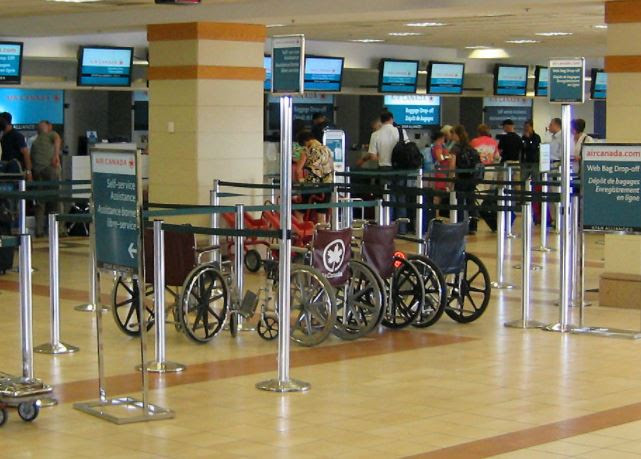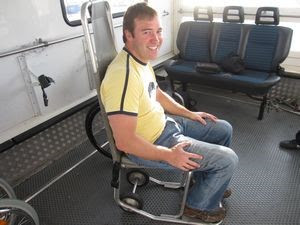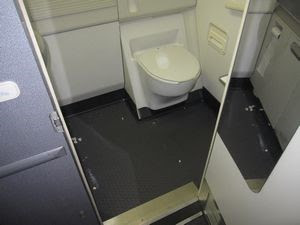Top 10 Accessible Airport and Air Travel Tips!
|
Has the thought and hassle of flying internationally with a disability kept you from experiencing the world? If you prepare well, it can actually be a fairly smooth process, and definitely worth it!
In this first newsletter of the year, I’m going to share my Top 10 Accessible Airport and Air Travel Tips based on my own firsthand experience of navigating international airports and air travel in my wheelchair.
 |
|
Top 10 Accessible Airport and Air Travel Tips!
|
|
1. Book wheelchair assistance if you need it: As soon as you’ve purchased your tickets, contact the airline to request any special assistance that you’ll need at the airport. This advance notice allows them time to make the necessary preparations. Some typical types of assistance include wheelchair service, escorting services, help with luggage etc.
2. Make sure you have enough time: For international flights, most airlines will inform you to arrive at least 3 hours before departure. For disabled travelers, I highly recommend you arrive a little earlier than this. Also, if you have booked a trip with a layover, make sure to have at least a 90 minute layover. Getting off the plane, transferring to another gate and possibly terminal, bathroom break, and getting on board the new plane- all of this takes a good amount of time.
3. Don’t use the self- check in: As soon as passengers enter the check-in area at the airport, they are encouraged by staff to use the self-check in machines. If you are a disabled traveler with special assistance or mobility needs, use the regular staffed check-in stands to make sure that every detail is being handled correctly, and that you get the help you need.
4. Getting around at the airport: In almost all airports throughout Europe, you’ll see that wheelchair access is good. The surfaces are flat and smooth, and there are lifts and elevators available to help wheelchair users avoid steps or escalators. Additionally, you will also find designated large accessible restrooms. Depending on what airport you’re flying into, there may be quite some distance between the gate and the baggage claim area. Please note that special airport staff is available to help either by pushing your wheelchair or using special assistance carts.
5. Getting through TSA security: The extended TSA security checks are considered a hassle – even to non-disabled travelers. However, the good news is that disabled travelers who are not able to walk won’t need to get out of their wheelchair during this process. Instead of walking through the regular, narrow body scanner, you will receive either a pat down by an officer or roll through a special security scanner. Your personal wheelchair or scooter will also be inspected.
6. Boarding the plane: For some disabled or elderly travelers who can walk short distances boarding won’t be a difficult process. However, for full-time wheelchair users, a special aisle chair is available to get on the plane and to your designated seat. You’ll have to transfer from your own wheelchair to this small wheelchair. If you are unable to transfer on your own, the special assistance staff are able to lift you. Remind the gate agent that you need pre-boarding assistance so they can have the aisle chair ready.
7. Seat Selection: As for your seat selection, it really depends on how well you transfer and how many people you have with you.
(a) The aisle seat in the bulkhead (first row behind Business Class) It has additional leg room but the arm rests do not come up as they contain the trays.
(b) The window seat. No one will need to climb over you if they need to get up.
(c) An aisle seat in the middle portion of a non-bulkhead row. That way the people sitting next to you can exit on the other side.
8. Using the bathroom onboard the plane: One challenge is getting to the lavatories, and the second one is to get in to them; the aisles are narrow and the lavatories are extremely small. A flight attendant can assist you from your seat onto the aisle chair and push you to the accessible lavatory. If you do not want to deal with this at all, other options include a leg bag, or other devises that allows you to relieve yourself without making a trip to the restroom. Remember to use the accessible restroom at the airport right before you board the plane!
9. Mobility equipment and airplanes: It is safe to assume that power wheelchairs and scooters will be stored underneath the airplane in the cargo hold. I have come across disabled travelers who were surprised to find out that their equipment would not fit there. Call the air carrier ahead of time to provide them with the dimensions of your equipment. You may have to fold down your seat, or take some parts off in order for it to work. For foldable wheelchairs there is usually an option to keep it with you to the entrance to the plane, where you will transfer to the aisle chair. They will then store it with the other over-sized hand luggage.
10. Accessible Airport Transfers: Do not make the mistake of assuming that accessible vehicles are waiting for you as other regular taxis do. In fact, you may end up stranded at the airport if you do this. Unless it is a federal law in the country you are traveling to that taxis must have a ramp, you won’t easily find them. Instead, book your accessible transfers ahead of time. One less challenge to handle is worth the extra step before your trip.
Did you know?
If planned correctly, the airplane and airports can be quite accessible. When you exit the airport in your European destination, you could soon encounter cobblestones, hills, steps into building, and bathrooms that are two small for a wheelchair. We have extensive accessibility knowledge of the most popular destinations in Europe and can provide you a fully-accessible vacation.
|
|
Travel Wisely,
John Sage, Founder and President of Sage Traveling
|




